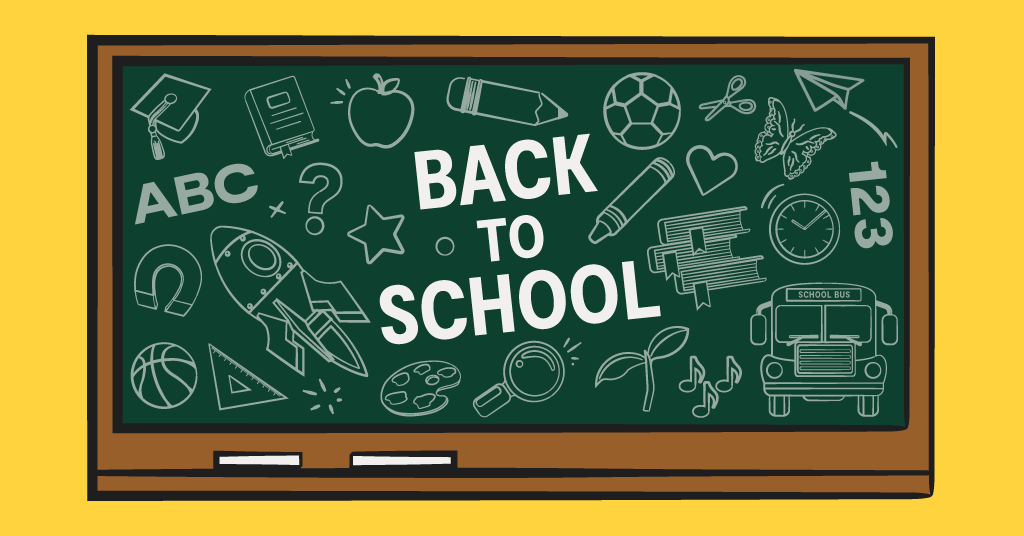
**This blog post was updated on August 5, 2021.**
Before kids pack up their book bags, don their brand-new outfits, and head off to the bus stop, make sure they’re learning in the best and safest way possible. In this updated guide, you’ll find helpful tips for online safety and the best recommendations for educational laptops that are sure to be a hit with children as they head back to school. And to make homework time a little bit easier, we’ve assembled some of the best free learning resources to help your kids get the most out of their school work.
Back to School Online Safety Tune-up
While your kids probably got a fair amount of screen time this summer (phones, tablets, TV, and video games — oh my!), now is the time to get back in the habit of setting healthy boundaries and learning about digital dangers. Here are 10 ways to help protect your kid online as they transition back to school.
1. Set parental controls to limit distractions
Start by finding out what parental controls your child’s device offers. Most devices offer something in the realm of supervision, even if they’re limited. Next, find out how Bark can give you real peace-of-mind by monitoring your child’s device and sending you alerts for concerning content.
2. Find out how kids use Google Docs for cyberbullying
Google Docs has become popular in schools, with many children using it for schoolwork, homework assignments, and even group projects. But kids are incredibly inventive, and they’ve managed to turn Google Docs into a de facto communication and social media hub. Confused? We break it down for you in this blog post.
3. Create a technology contract
A technology contract is a great way for your family to collaborate on rules for using devices and accessing the internet. It can help make sure the whole family is on the same page about how to get the most out of technology, and — most importantly — how to stay safer online.
4. Make use of apps to connect with other parents
While you’re probably not arranging for carpool pickups and dropoffs right now, communicating with the guardians of your children’s friends can be a good source of support, information, and even humor while you navigate online schooling.
5. Make time for real conversations
As life starts to get hectic again with carpools, soccer practice, rushed weeknight dinners, and more, prioritize finding some time to talk about the serious things going on in your children’s lives. We’ve got a handy guide with conversation starters to make it easier for you.
6. Encourage healthy digital habits
Kids look to their parents to learn how the world works, and it’s up to us to make sure we’re passing on good digital habits — from setting good examples to establishing digital boundaries.
7. Host a virtual tech night
This Tech Night Resources page is filled with everything you’d need to help educate families in your communities about technology and social media, including free videos, downloadable PDFs, and more.
8. Get support for teaching kids with special needs
Use this page of resources to learn more about how to advocate for kids with special needs during this time of remote learning, which can be especially challenging in virtual classroom settings.
9. Take a crash course in Chromebooks
Chromebooks have become the go-to tech device for students across the U.S., but did you know they’re not exactly laptops? Learn more about these versatile computers in this blog post.
10. Learn more about your kid’s school-issued tech
Many students get access to digital technologies like cloud storage for the first time at school, and parents may not be familiar with them — or their risks.
Best Laptops for Back to School
If your child’s in the market for their very first laptop — or just definitely needs a new one after the past two years — we’ve got you covered. Here are a few of the most popular and powerful computers we recommend for kids.
Lenovo IdeaPad 1
This lightweight laptop has up to eight hours of battery life to get your kid through even the longest of school days. With purchase, you get a complimentary year-long subscription of Microsoft Office 365, which includes Word, Powerpoint, Excel, and more. Also, Lenovo’s LanSchool and Bark have partnered together to provide award-winning edtech solutions to help keep students safe online.
13-inch MacBook Air
This choice is a great laptop for teens who aren’t as prone to dropping things — they’re incredibly thin and lightweight. A MacBook Air is more expensive than many comparable laptops, but for dedicated Apple families, it’s a great first laptop that integrates well into your existing ecosystem.
Microsoft Surface Laptop 3
This laptop is stylish and has several sleek metallic colors to choose from. It’s lightweight and features an impressive all-day battery. There are also amazing Microsoft accessories to pair with the Surface Laptop 3, including Surface Earbuds, the Surface Arc Mouse (if your kid hates using the touchpad), and the Surface Pen to make taking notes easier.
Dell Chromebook 3100 Education
For younger kids, this is a perfect durable first laptop. It’s made to withstand the wear and tear of daily use and accidents, and the keyboard is even spill-resistant for up to 12 ounces of liquid (for those lunchtime study sessions). Along with its 14-hour battery life, the Dell Chromebook 3100 is sure to keep up with whatever your kid can throw at it (literally).
Acer Chromebook 314
With impressive Intel processing, the Acer Chromebook 314 makes sophisticated classroom projects run smoother and faster. Physically larger than most laptops and Chromebooks, this can come in handy for educational videos and screen sharing — especially if your kid is going to be remote learning in the fall.
Incredible Online Educational Resources
With free educational resources for nearly every subject and learning style available through a quick Google search, there’s no better time to learn from home than now. These links are just a few of the amazing websites that kids can access to help them ace their next test or write that perfect English paper.
Khan Academy
This nonprofit website provides dozens of in-depth lessons on everything from trigonometry to world history. Perfect for middle and high schoolers, Khan Academy features videos, interactive problems, and more.
Quizlet
Flashcards always worked when you were a kid and they still work today — they’ve just gone digital! With Quizlet, your child can create their own sets of flashcards to work on memorizing key concepts, or they can browse ready-made cards on a variety of topics.
Duolingo
There’s no better way to have fun while studying Spanish or French than playing the fun mobile game Duolingo. In just a few minutes a day, your kid can enrich their classroom learning with vocabulary, grammar, and pronunciation.
Shmoop
Remember CliffsNotes? Shmoop is even better because it’s actually fun! These humor-injected study guides and study tools make learning easier — and your kid may even be inspired to read more, too.
Desmos
Fancy graphing calculators for back to school can be a necessary (and expensive) tool for advanced math classes. This free app does all the work of a TI-82 without the hefty price tag. It even features a lockdown mode for use during exams.
Read more
Bark helps families manage and protect their children’s digital lives.






